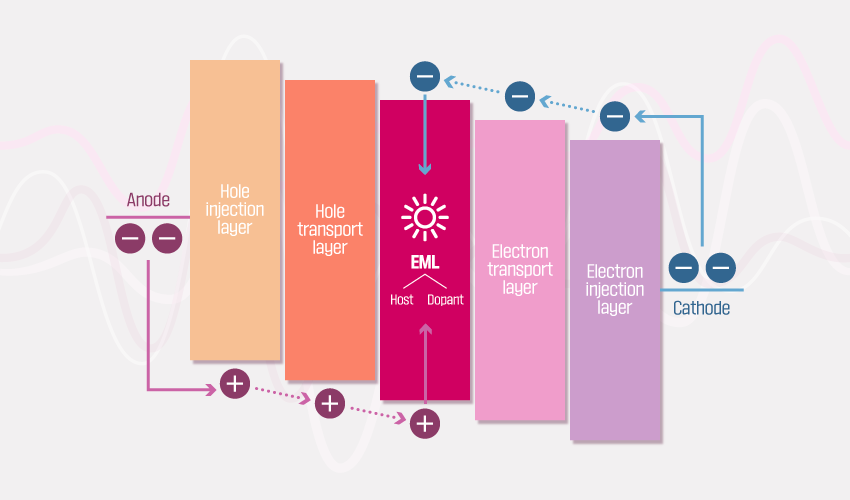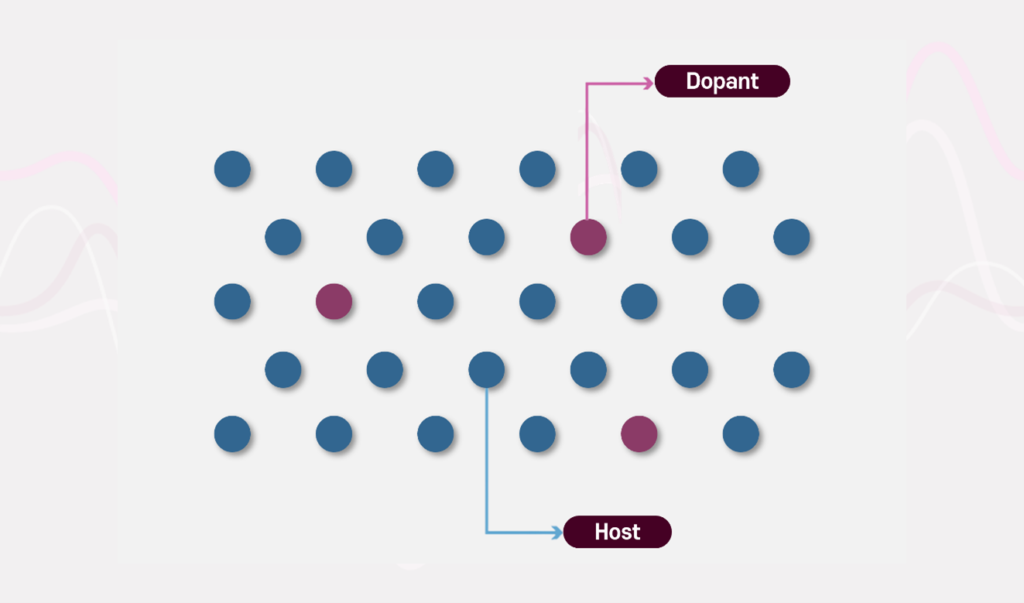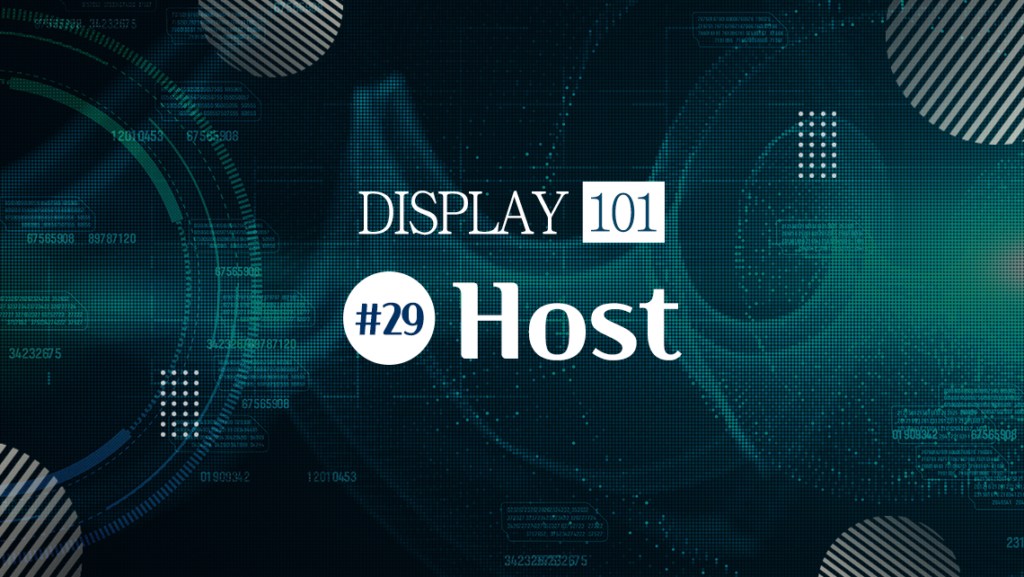DISPLAY 101
#29 Host

| Host: A key material of OLED which supports electrons and holes with creating excitons in the emission material layer (EML) |
In this episode, we will be taking a step further from our previous explanation of the key OLED material ‘Dopant’ to talk about the ‘Host’. Hosts are another essential element in generating light in OLEDs and are tied at the hip with dopants when it comes to generating light on OLEDs.
How hosts facilitate OLED’s emission of light

Before talking about the host, let’s revisit how OLED emits light. When a current flows through an OLED panel, positive holes (+) and negative electrons (-) injected from the anode and cathode meet and combine in the EML. Through the union of these two elements, a high-energy state called an ‘Exciton’ is formed. As this high-energy exciton state descends to a relatively lower and more stable state, the energy gap is then transmitted (or emitted) as light.
Hosts are one of the components that make up the EML alongside dopants and are tasked with creating successful formations of excitons by allowing the positive holes to combine with electrons. All in all, hosts orchestrate the creation of excitons, while dopants receive these excitons to allow them to emit light efficiently!

This mechanism of generating light by utilizing the partnership between the host and dopant is widely referred to as the ‘Host-Dopant System’. In this system, the proportion of hosts far exceeds that of dopants; dopants are only added in small amounts to enhance the efficiency of diodes, stability, color purity, and more. Because of this relationship, dopants are sometimes referred to as ‘Guests’!
Compared to a single organic material system used during the early development of OLED displays, the Host-Dopant System far excels in terms of luminous efficacy and color purity and is extensively used across most current OLEDs today.









